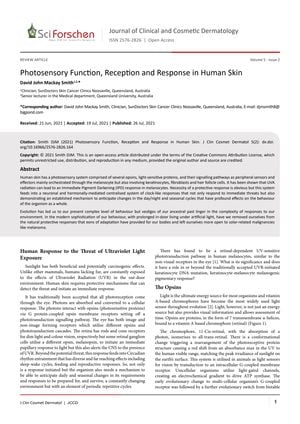Photosensory Function, Reception, and Response in Human Skin
January 2021
in “
Journal of clinical and cosmetic dermatology
”

TLDR Human skin responds to light with protective mechanisms, but more research is needed to understand these processes and their implications for health and therapy.
The review article from 2021 examined the photosensory functions of human skin, highlighting the role of opsins as light-sensitive proteins that mediate skin responses to UV and visible light. It was found that UVA radiation triggers an Immediate Pigment Darkening (IPD) response in melanocytes, which is part of a broader protective mechanism that aligns with circadian and seasonal cycles. The review also discussed the potential health implications of modern lifestyles that reduce exposure to natural light, possibly increasing the risk of conditions like melanoma. Additionally, the document reported that human hair follicles can extend their growth phase in response to blue light, suggesting potential therapeutic applications. The review concluded that while the skin's photosensory system is evident, further research is needed to fully understand its mechanisms and how it can inform therapy and lifestyle decisions.

